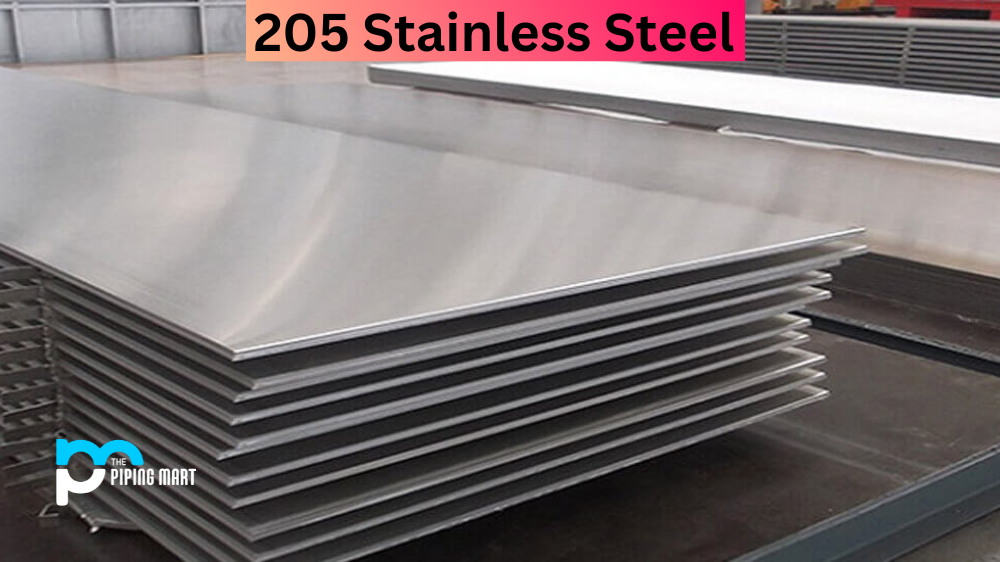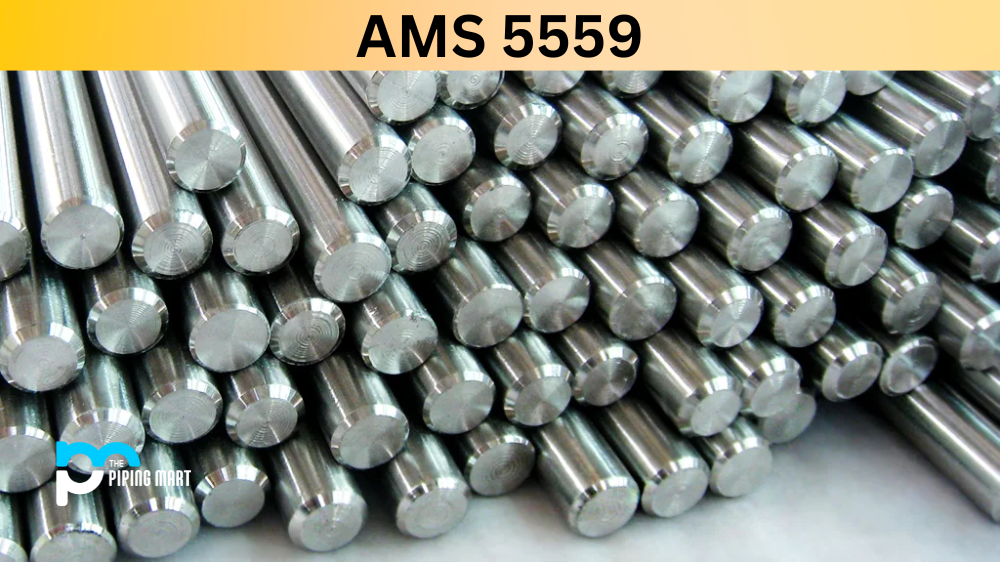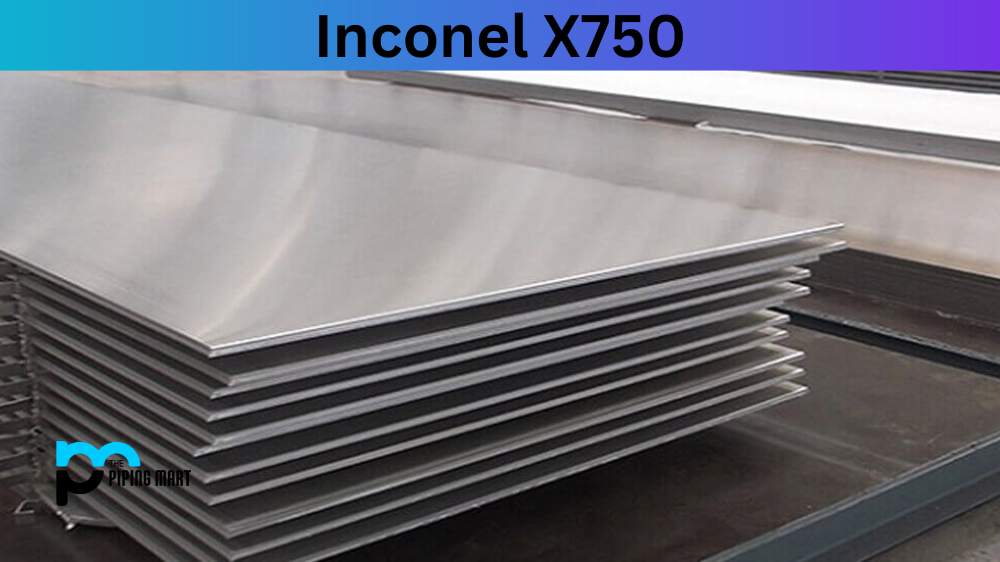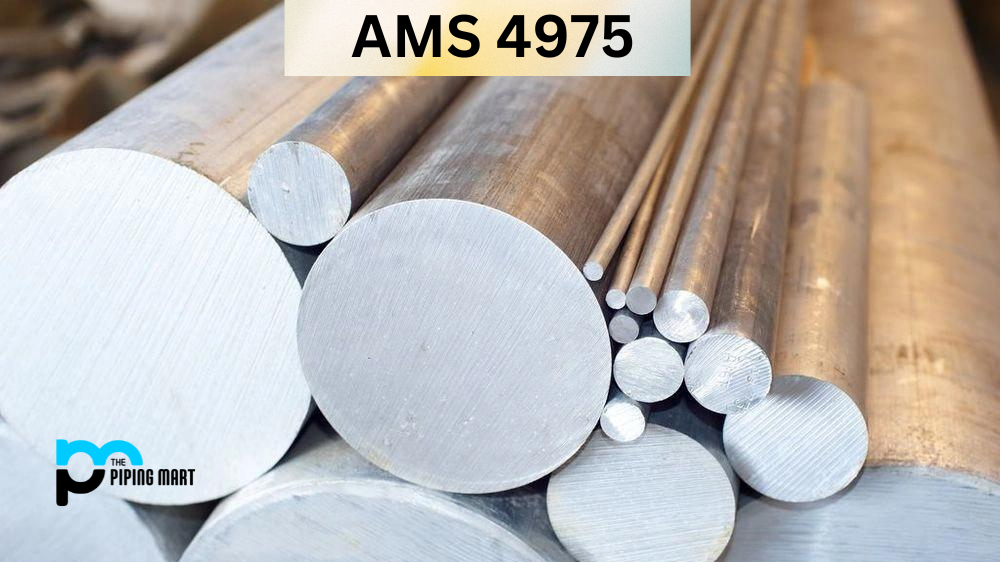Have you ever heard of 205 Stainless Steel? This alloy is a martensitic grade of stainless steel with a combination of properties, making it extremely versatile. It offers excellent corrosion, strength, and heat resistance, making it an ideal choice for many applications. This blog post will examine the composition, physical and chemical properties, uses and applications of UNS S20500.
205 Stainless Steel Composition
The composition of UNS S20500 consists primarily of iron and chromium, with other elements such as nickel and carbon in smaller amounts. The iron content in 205 Stainless Steel is around 70%, while the chromium content is around 17%. Other elements, such as nickel and carbon, are also present in small amounts.
| Element | Content (%) |
|---|---|
| Iron, Fe | Balance |
| Chromium, Cr | 16.5-18.0 |
| Manganese, Mn | 14.0-15.5 |
| Nickel, Ni | 1.0-1.75 |
| Silicon, Si | 1 |
| Nitrogen, N | 0.32-0.40 |
| Carbon, C | 0.12-0.25 |
| Phosphorous, P | 0.06 |
| Sulfur, S | 0.03 |
205 Stainless Steel Chemical Properties
Due to its high iron and chromium content, UNS S20500 has excellent corrosion resistance compared to other metals. This makes it ideal for use in environments with much moisture or exposure to salt water or other corrosive materials. Additionally, due to its high chromium content, the material has good oxidation resistance at high temperatures up to 1600°F (871°C).
205 Stainless Steel Mechanical Properties
UNS S20500 is a metal alloy with remarkable mechanical properties. It is hard and resistant to many types of corrosion, has excellent formability and weldability, and can be cold-worked for various applications. These features make 205 stainless steel ideal for tough engineering components, from medical instruments to electronic housing components. Compared to other metals, it stands out for its strength even at temperatures as low as cryogenic levels. Furthermore, 205 stainless steel maintains its mechanical properties even in extreme environmental conditions, leading to great reliability for industrial use.
| Properties | Metric | Imperial |
|---|---|---|
| Tensile strength | 790 – 830 MPa | 115000 – 120000 psi |
| Yield strength (@strain 0.200 %) | 450 – 475 MPa | 65300 – 68900 psi |
| Elastic modulus | 197 GPa | 28572 ksi |
| Poisson’s ratio | 0.27-0.30 | 0.27-0.30 |
| Elongation at break | 40% | 40% |
| Hardness, Rockwell B | 100 | 100 |
205 Stainless Steel Physical Properties
UNS S20500 has good strength and ductility with a moderate amount of hardness. It can be machined easily using traditional techniques such as turning, milling, drilling, tapping etc., without any issues. Furthermore, it can be welded using common welding processes like TIG and MIG welding with no special precautions. The material also has good thermal conductivity properties, making it suitable for use in applications where heat needs to be quickly conducted away from the surface.
| Physical Properties | Metric | English | Comments |
|---|---|---|---|
| Density | 7.80 g/cc | 0.282 lb/in³ |
205 Stainless Steel Equivalent
- SAE 30205
- AISI 205
205 Stainless Steel Uses
UNS S20500 is a versatile metal commonly used to produce food-grade equipment and components. It has become increasingly popular for its impressive corrosion resistance, excellent heat conductivity, sanitary qualities and easily maintained surfaces. 205 stainless steel might be found in commercial baking ovens, braising pans, steamers, conveyor toasters, dry kettles and many other kitchen appliances used in cooking establishments. This metal also finds applications outside of the food industry, such as large-scale construction projects where its tensile strength is beneficial.
Corrosion Resistance
205 stainless steel is popular for many applications due to its exceptional corrosion resistance. It is developed through a proprietary combination of austenitic and ferritic steel alloys, resulting in an exceptionally durable product that can withstand salt water and acidic chemicals. For added protection, the material is often coated with chromium to further enhance the properties necessary to resist oxidation and corrosion caused by the elements. Its non-magnetic properties make it ideal for many industrial applications where materials must function correctly under diverse temperature changes and various chemical compositions. 205 stainless steel has emerged as one of the most reliable options for reliable performance, long-lasting durability, and robust corrosion resistance needed throughout many industries today.
Heat Resistance
205 stainless steel is an alloy known for its impressive heat resistance. It has been designed to maintain its structural integrity at temperatures ranging from 800 to 1100 degrees Celsius, making it an ideal choice for equipment used in high-temperature environments. The stability that 205 stainless steel offers, even at these extreme temperatures, allows for precision parts creation and reliable performance over long periods. On top of its outstanding heat resistance, 205 stainless steel also provides exceptional corrosion and wear resistance to ensure longevity and dependable performance over extended use.
Heat Treatment
Heat treatment of 205 stainless steel is an important part of the fabrication process. This type of steel must be heated to a specific temperature for a certain amount of time to ensure optimal strength and durability. Different levels of heat treatment can be used to increase hardenability or improve some other properties, depending on intended usage. Commonly, 205 stainless steel components are stress relieved at 650° Celsius, annealed at 850-900° Celsius, and hardened at 950-1000° Celsius. Additionally, it is important to understand cooling rates as they can greatly impact component performance. Careful observation during all stages of heat treatment is essential in determining if the final outcome meets the expected results.
Machining
Machining 205 stainless steel can be a challenging task because of its all-around hardiness. This steel alloy, composed mostly of iron, is extremely tough and durable — making it an ideal material for many industrial applications. But when it comes to machining, 205 stainless steel requires very sharp cutting tools to ensure accuracy and minimize work hardening. The addition of sulfur and selenium when processing the steel makes it especially difficult to machine and gives it excellent corrosion resistance. With the proper tools and patience with the machining process, skilled operators can produce even and precise pieces out of 205 stainless without fail.
Welding
Welding of 205 stainless steel requires a certain level of skill and expertise. It must be done carefully and delicately to not weaken the integrity of the steel or cause any cracks or warping. Using the right type of welding rod at an appropriate temperature is essential for properly quality welding all grades of stainless steel. Even with proper preparation and technique, it is important to slow down and take time when welding stainless steel to avoid problems with porosity, which can occur due to contaminants from a faulty technique. With care taken in properly prepping the joint, selecting the correct filler material, controlling heat input, and using the proper technique for each job, 205 stainless steel can be successfully welded.
Conclusion
In conclusion, 205 stainless steel is an incredibly versatile alloy that can be used for various applications due to its excellent corrosion resistance, strength, and heat resistance properties. Its composition makes it easy to machine and weld, with no special precautions necessary during fabrication or processing operations. Additionally, its thermal conductivity makes it suitable for use in applications where heat must quickly be conducted away from the surface. If you’re looking for an alloy with superior performance and minimal maintenance requirements, consider using 205 stainless steel!

Pipingmart is a B2B portal that specializes in metal, industrial and piping items. Additionally, we share the latest information and information about materials, products and various types of grades to assist businesses that are involved in this business.




